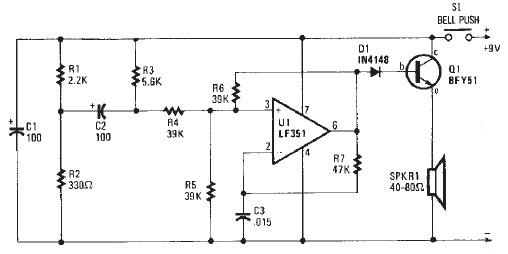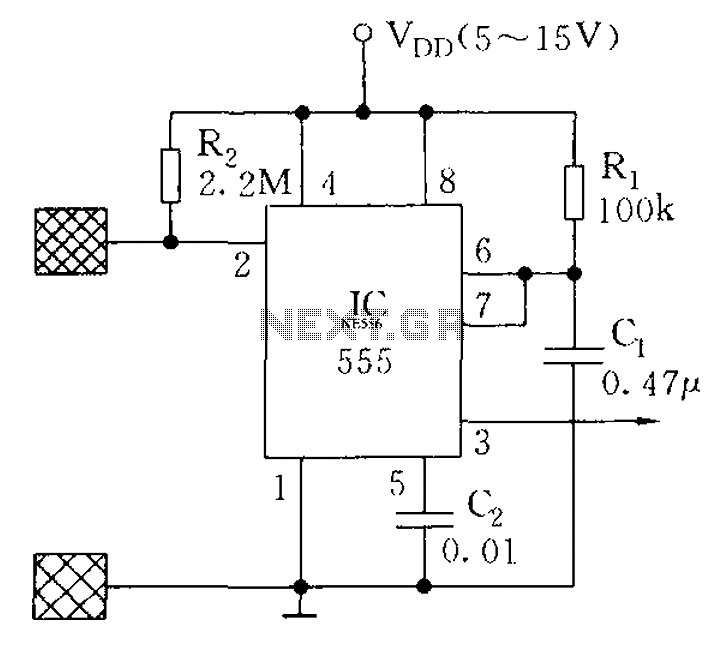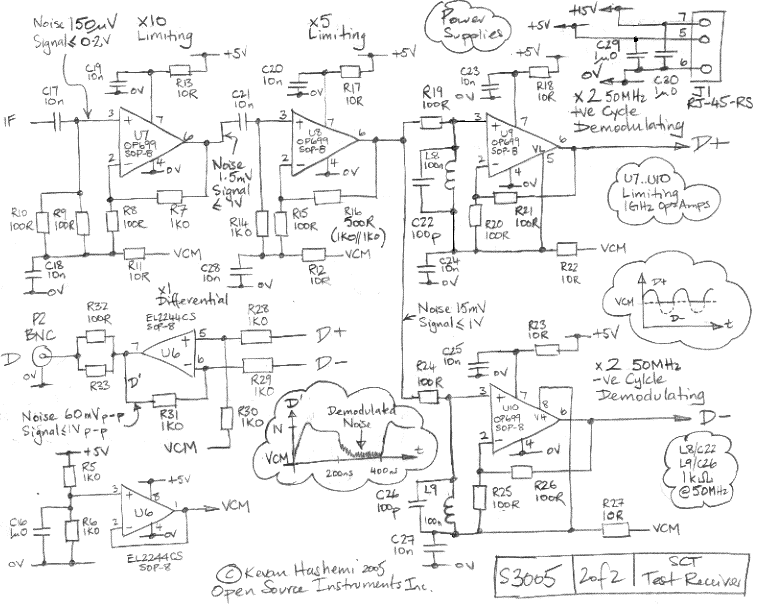
electronic door buzzer circuit schematic

This electronic door buzzer circuit schematic has a straightforward function and is simple to construct. The circuit employs an LF351 operational amplifier along with a few common electronic components. When the S1 push-button is pressed, a positive voltage is applied to capacitor C2 and the non-inverting terminal of the LF351 operational amplifier, causing the circuit to oscillate at a low frequency. The speaker used in this project should have an impedance ranging from 40 to 80 ohms. The electronic circuit requires a 9-volt DC power supply for operation.
The electronic door buzzer circuit is designed to provide an audible alert when someone presses the push-button switch S1. The LF351 operational amplifier serves as the core component, functioning as an oscillator to generate sound signals. The configuration utilizes positive feedback to achieve oscillation, which is essential for producing the sound output.
Upon pressing the S1 switch, a voltage is applied to capacitor C2, which charges and subsequently influences the non-inverting input of the LF351. The operational amplifier is configured in a feedback loop that causes it to oscillate, creating a square wave output. This oscillation is then sent to the connected speaker, which converts the electrical signals into audible sound waves.
The choice of speaker impedance is crucial for the performance of the circuit. A speaker with an impedance between 40 to 80 ohms is recommended to ensure optimal sound output without overloading the amplifier. The circuit is powered by a 9-volt DC power supply, which provides sufficient voltage for the operational amplifier to function effectively.
The simplicity of this circuit makes it an excellent project for beginners in electronics, allowing them to understand the principles of oscillation, amplification, and sound generation. Additional components such as resistors and capacitors can be added for fine-tuning the frequency and volume of the buzzer, enabling customization based on specific requirements.This electronic door buzzer circuit schematic has a very simple function and is very easy to build. This door buzzer circuit use a LF351 operational amplifier and other few common electronic components. When the S1 push-button is depressed an initial positive voltage is placed on the C2 and the non-inverting terminal of the LF351 operational ampl
ifier and the circuit will oscillate at a low frequency. The used speaker for this project must have a impedance between 40 -80 ohms. The door buzzer electronic circuit need to be powered using a 9 volts DC power supply. 🔗 External reference
The electronic door buzzer circuit is designed to provide an audible alert when someone presses the push-button switch S1. The LF351 operational amplifier serves as the core component, functioning as an oscillator to generate sound signals. The configuration utilizes positive feedback to achieve oscillation, which is essential for producing the sound output.
Upon pressing the S1 switch, a voltage is applied to capacitor C2, which charges and subsequently influences the non-inverting input of the LF351. The operational amplifier is configured in a feedback loop that causes it to oscillate, creating a square wave output. This oscillation is then sent to the connected speaker, which converts the electrical signals into audible sound waves.
The choice of speaker impedance is crucial for the performance of the circuit. A speaker with an impedance between 40 to 80 ohms is recommended to ensure optimal sound output without overloading the amplifier. The circuit is powered by a 9-volt DC power supply, which provides sufficient voltage for the operational amplifier to function effectively.
The simplicity of this circuit makes it an excellent project for beginners in electronics, allowing them to understand the principles of oscillation, amplification, and sound generation. Additional components such as resistors and capacitors can be added for fine-tuning the frequency and volume of the buzzer, enabling customization based on specific requirements.This electronic door buzzer circuit schematic has a very simple function and is very easy to build. This door buzzer circuit use a LF351 operational amplifier and other few common electronic components. When the S1 push-button is depressed an initial positive voltage is placed on the C2 and the non-inverting terminal of the LF351 operational ampl
ifier and the circuit will oscillate at a low frequency. The used speaker for this project must have a impedance between 40 -80 ohms. The door buzzer electronic circuit need to be powered using a 9 volts DC power supply. 🔗 External reference





